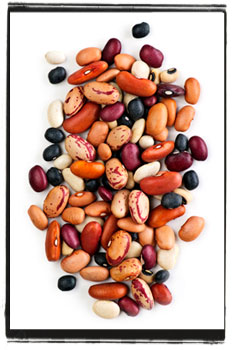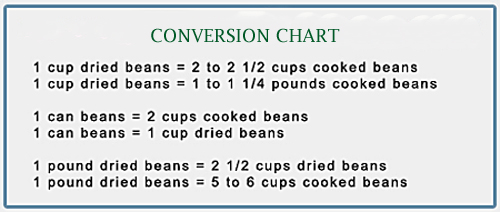
Legumes are a class of vegetables that bear their fruit in pods. They are incredibly healthy foods essential for maintaining a healthy plant-based diet.
Legumes are among the most versatile and nutritious foods available. They are typically low in fat, contain no cholesterol, and are high in folate, potassium, iron, and magnesium.
Legumes are also an excellent source of protein and contain beneficial fats and soluble and insoluble fiber.
Read on for additional information on storing, preparing, cooking, and conversions.
Legumes are made up of the following:
- Beans
Nuts
Peas
Lentils
Legumes are rich in the following nutrients:
- Calcium
Dietary fiber
Folate
Iron
Magnesium
Phosphorus
Potassium
Protein
Riboflavin
Thiamin
Vitamin B6
Zinc
Legume family:
Beans:
Adzuki Beans, Black Beans, Soybeans, Anasazi Beans, Fava Beans, Garbanzo Beans (chickpeas), Kidney Beans, and Lima Beans.
Nuts:
Peanuts, Soy Nuts and Carob Nuts.
Peas:
Green Peas, Snow Peas, Snap Peas, Split Peas and Black-Eyed Peas.
Lentils:
Yellow, Orange, Green, Brown or Black Lentils.
Storing legumes:
Store all legumes in a cool, dry place. Never store dried or uncooked legumes in the refrigerator. Refrigerate prepared/cooked legumes only.
Preparing legumes:
Pick through the dried beans and discard any discolored or shriveled ones, along with any foreign matter as well. Soak dried beans and legumes, except for black-eyed peas and lentils, in room-temperature water. Soaking will rehydrate them, so they cook more evenly.
Choose any of the soaking methods below, depending on the amount of time you have to prepare them:
Slow Soak:
Using a stockpot, cover 1 pound dried beans with 10 cups water. Cover and refrigerate for 6 to 8 hours or overnight.
Hot Soak:
Using a stockpot, bring 10 cups of water to a boil. Add 1 pound of dried beans and return to a boil. Remove from heat, cover tightly, and set aside at room temperature for 2 to 3 hours.
Quick Soak:
Using a stockpot, bring 10 cups of water to a boil. Add 1 pound of dried beans and return to a boil. Boil 2 to 3 minutes. Remove from heat, cover, and set aside at room temperature for 1 hour.
Gas-free Soak:
Using a stockpot, place 1 pound of beans in 10 or more cups of boiling water. Boil for 2 to 3 minutes. Remove from heat, cover, and set aside overnight. The next day 80 to 90 percent of the indigestible sugars that cause gas will have dissolved into the soaking water. Strain, rinse and replace the pot with fresh water.
Cooking tips:
After soaking, drain and rinse beans, and add to a stockpot. Cover the beans with three times their volume of water. Add onion, garlic, herbs, or spices as desired, and bring to a boil. Reduce heat and simmer gently, uncovered, occasionally stirring, until tender. The cooking time will vary depending on the type of bean. Start checking them after 45 minutes. Add additional water if the beans become uncovered.
Other tips:
Add salt, vegetables, or other acidic ingredients, such as vinegar, tomatoes, or juice, near the end of the cooking process when the beans are tender; if added too early, they can make the beans tough.
The beans are fully cooked when you can easily mash them between two fingers or with a fork.
Freeze cooked beans for later use by immersing them in cold water until cool. Drain well, then freeze.
If you purchase canned beans, read the label to ensure they were prepared using vegetable broth or water, and not chicken or beef broth as many of the more popular brands are.
Including various legumes in your diet will help your body get the nutrients it needs to stay healthy.


